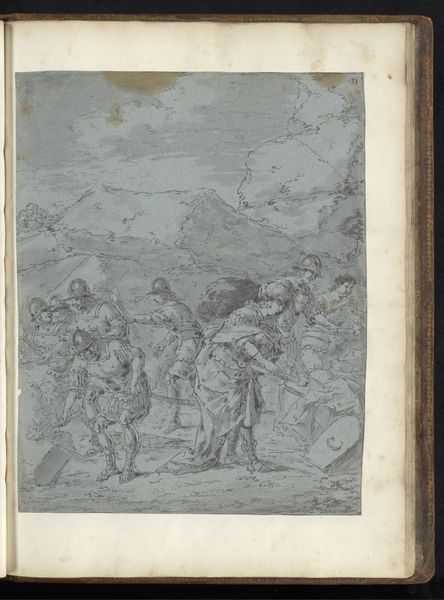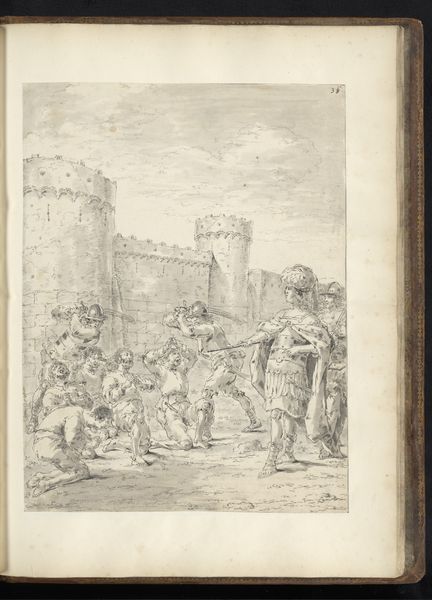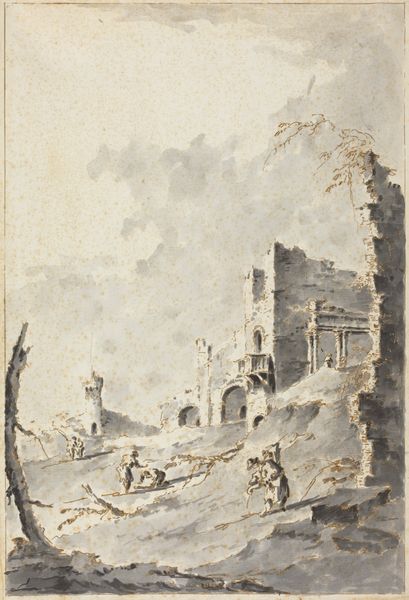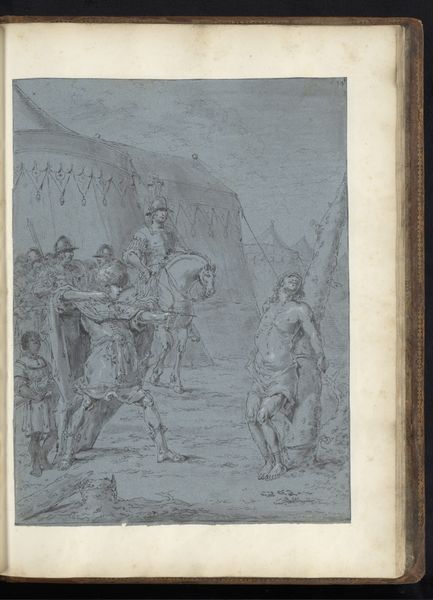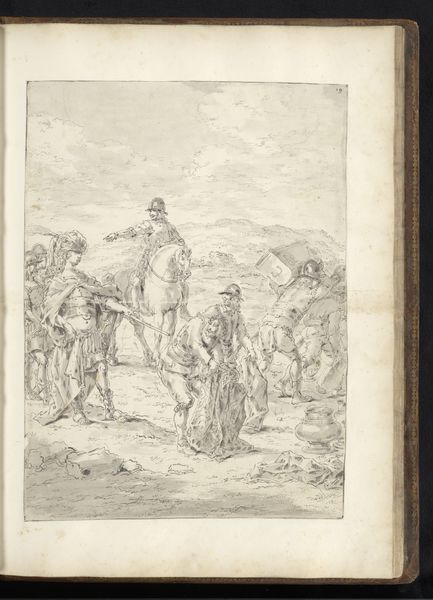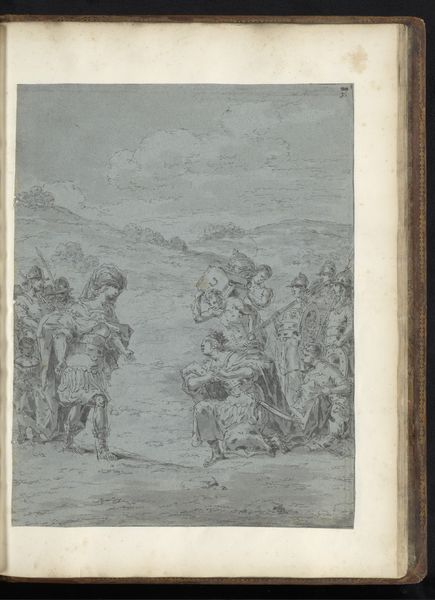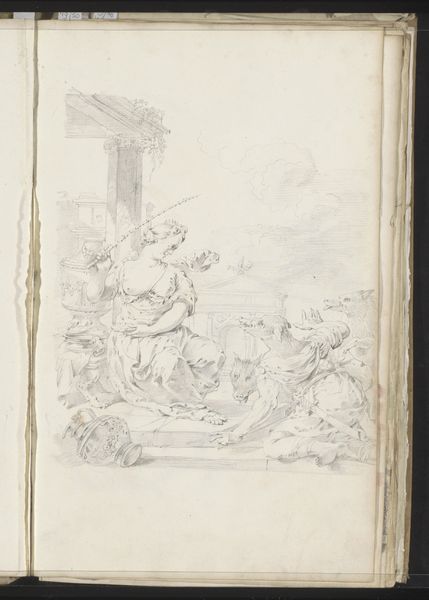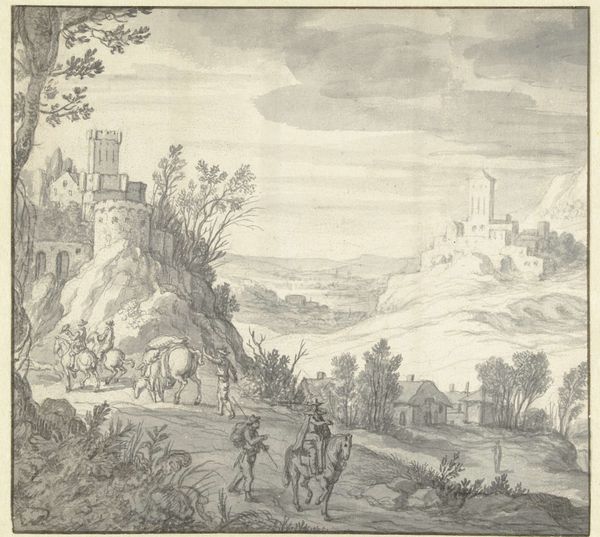
Alexander de Grote raakt gewond en wordt weggedragen c. 1655 - 1665
0:00
0:00
leonaertbramer
Rijksmuseum
drawing, paper, ink, pen
#
drawing
#
aged paper
#
toned paper
#
baroque
#
figuration
#
paper
#
personal sketchbook
#
ink
#
ink drawing experimentation
#
pen-ink sketch
#
pen work
#
pen
#
watercolour illustration
#
genre-painting
#
history-painting
#
sketchbook art
#
pencil art
#
watercolor
Dimensions: height 407 mm, width 308 mm
Copyright: Rijks Museum: Open Domain
Curator: The initial impact is quite theatrical. A stark composition dominated by light and shadow; deeply expressive. Editor: And full of urgency! It looks like a pivotal moment, an aftermath of violence perhaps. I see vulnerable bodies, one being carried by others... Curator: Precisely. Let's contextualize. What we're seeing is Leonaert Bramer’s pen, ink, and watercolor drawing, "Alexander the Great Wounded and Carried Away," created around 1655-1665. Currently it’s held at the Rijksmuseum. The Baroque sensibility is evident, no? Note the dynamism and dramatic tension. Editor: The subject matter – Alexander the Great – it's important to think about how historical narratives get deployed, even in this more intimate scale on aged paper. I think of depictions of powerful men, what is at stake when those narratives get challenged by injury or death? Bramer gives us a moment of vulnerability of Alexander after injury. Curator: Absolutely, and this drawing, rendered in a style echoing quick sketchbook art, elevates that vulnerability. The sweeping strokes of ink to suggest depth... Editor: Look at the secondary figures in the scene: some are aiding, others are seemingly in distress, their arms are up as though calling for help, or perhaps are gesturing in shock. It reveals a society responding to leadership wounded. What can we say about Bramer's choices in the specific physiognomy of each person? It's definitely not a uniform mass of bodies, there is variation, some perhaps stereotypical representations from that era. Curator: The gestural economy is quite remarkable. Each figure rendered with an emotional articulation achieved through line work that stops short of excess. Notice how Bramer balances between classical composition, dynamic diagonal pull that centers around the pallbearer's path. Editor: A detail worth emphasizing: look closely at how Bramer deploys his pen in the architectural remains in the backdrop, crumbling to create an ominous, sorrowful sense. The wounded king is carried, while at the same time the city, his built domain, also seems to share that vulnerability, in its ruin. It asks about temporality of power and its material representation. Curator: This study holds complexities... more profound upon deeper examination, doesn't it? It is quite elegant, despite depicting a scene of injury. Editor: Exactly. A piece that invites critical reflection regarding narratives around leadership and human vulnerability, particularly as articulated within art history.
Comments
No comments
Be the first to comment and join the conversation on the ultimate creative platform.


